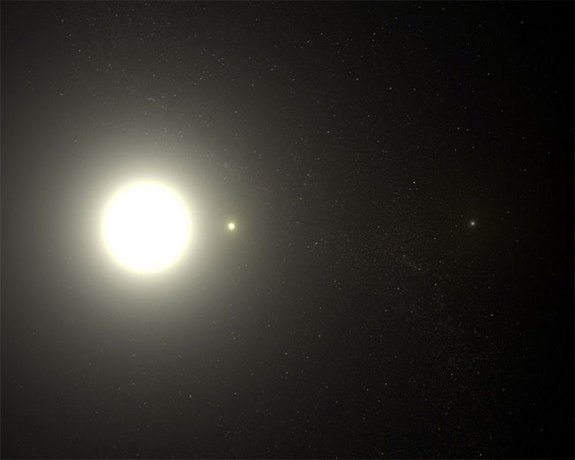Unknown things about the North Star
Due to the rotation of the Earth around the axis, stars change their position in the sky, grow and dive. However, the Earth's rotation is directed towards the North Star, making it seem never to move.
The North Star is 434 light-years away and 4,000 times brighter than the Sun. It is the 48th bright star in the sky and has an apparent magnitude of 2.02.
The apparent star level is the number that represents the brightness of a star when looking at reality from Earth. The smaller the star level, the brighter the star. The moon and Venus have negative star levels.
According to astronomers, the phenomenon of movement (the shaking of the Earth axis) causes the Earth axis to change direction every year. In about 500 years, it will no longer be towards the North Star.
The North Pole is a Cepheid-like pulsar. It shrinks and relaxes, changing brightness in a few days. The small point that we see with its naked eye is the synthetic light coming from a three-star system orbiting a common focus.
The first star Polaris A is a super giant star weighing 6 times the Sun. The second companion star Polaris Ab rotates around it with a distance of 2 billion km. The third star Polaris B is farther away.

The North Pole is actually a system of three stars orbiting a common focus.
Arctic stars in Vietnam are often mistaken for "Big Dipper".
Bac Dau is actually a constellation in ancient Eastern astronomy, consisting of 7 bright stars (Bac Dau), which are 7 star-shaped stars of the Big Bear constellation.
Because of its proximity to the North Star and easily recognizable, the ancients used this constellation to find the North Star (by extending the outer edge of the dipper by 5 times to the North Pole) to determine the North.
- The essence of the North Star
- Interesting things you didn't know about the 25,800 year old Northern star
- Pole Star
- Learn about the North Star
- Overview of Uranus
- Unknown things about Einstein
- The scientists were skeptical of discovering Star Death
- For the first time, a star has been discovered in a star
- Why is the word 'x' used for unknown symbols in mathematics?
- Discover many interesting things in the star closest to the solar system
- Things that many people may not know about the heart
- The mysterious age of the mysterious star
 Van Allen's belt and evidence that the Apollo 11 mission to the Moon was myth
Van Allen's belt and evidence that the Apollo 11 mission to the Moon was myth The levels of civilization in the universe (Kardashev scale)
The levels of civilization in the universe (Kardashev scale) Today Mars, the sun and the Earth are aligned
Today Mars, the sun and the Earth are aligned The Amazon owner announced a secret plan to build a space base for thousands of people
The Amazon owner announced a secret plan to build a space base for thousands of people A shooting star, about to explode in the sky of Earth?
A shooting star, about to explode in the sky of Earth?  Image of a new star spewing gas loudly across the Milky Way galaxy
Image of a new star spewing gas loudly across the Milky Way galaxy  The 'deadly' truth about strange radio signals transmitted to Earth
The 'deadly' truth about strange radio signals transmitted to Earth  Scientists Stunned to Discover Star With Supersonic Tsunamis Three Times Higher Than the Sun
Scientists Stunned to Discover Star With Supersonic Tsunamis Three Times Higher Than the Sun  Death 11.5 Billion Years Ago Bombs NASA: A Chilling Prediction for Us
Death 11.5 Billion Years Ago Bombs NASA: A Chilling Prediction for Us  In 2024, the cosmic monster in the 13th century ancient text will return.
In 2024, the cosmic monster in the 13th century ancient text will return. 